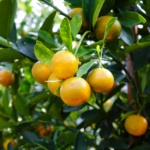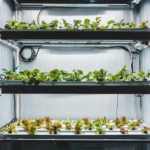
The agricultural landscape in Africa is undergoing a transformation. Traditionally known for smallholder farms and fragmented systems, the continent is now experiencing a digital shift powered by smart technologies. Among the most influential tools in this shift is the Internet of Things (IoT), which is emerging as a game-changer for farming logistics. In this context, Smart Agriculture Africa is not just a concept—it’s a solution to longstanding inefficiencies in the agricultural supply chain.
As demand for African agricultural products rises globally, so does the need to streamline how food travels from the farm to export markets. IoT technology, when integrated with farming operations, brings precision, transparency, and speed—three vital elements that strengthen Africa’s position in the global agricultural economy.
Understanding IoT in the Agricultural Supply Chain
The Internet of Things (IoT) refers to interconnected devices that collect and exchange data. In agriculture, this could include sensors in the soil, weather stations, GPS-enabled machinery, temperature trackers in storage facilities, and smart irrigation systems. When applied across the supply chain—from planting to post-harvest logistics—IOT enables real-time monitoring and informed decision-making.
This digital transformation supports the broader goal of Smart Agriculture Africa, which uses data-driven tools to increase efficiency, reduce waste, and improve profitability.
How IoT Improves Supply Chain Efficiency
1. Real-Time Monitoring of Crops and Harvests
One of the most critical issues in African farming is the lack of timely information. IoT solves this by providing real-time data on soil moisture, crop health, and weather patterns. With this information, farmers can optimize the timing of planting, irrigation, and harvesting, ensuring higher yields and better-quality produce.
This level of precision feeds into a more predictable supply chain. Buyers and exporters can plan better when they know when crops will be ready and in what quantities.
2. Improved Post-Harvest Handling
Post-harvest losses in Africa can reach up to 30–40% due to poor storage, handling, and transportation. IoT-enabled storage systems can monitor temperature, humidity, and pest activity to maintain ideal conditions for grains, nuts, fruits, and vegetables.
For example, sensors in a cashew storage warehouse can alert managers when the temperature rises too high—preventing spoilage and financial loss. This is a practical demonstration of how Smart Agriculture Africa can make African exports more reliable and competitive.
3. Logistics and Fleet Management
Transportation in Africa often faces delays due to poor infrastructure or lack of coordination. IoT can help by tracking vehicle location, fuel usage, and delivery times. GPS and telematics systems allow exporters to monitor shipments in real time, reduce delivery delays, and ensure that perishable goods reach ports or buyers on schedule.
This increased transparency builds trust with international buyers and supports consistent export performance.
4. Inventory and Warehouse Automation
Smart inventory systems that rely on IoT can automatically update stock levels, alert for low inventory, and optimize storage space. For businesses managing multiple commodities, such as nuts, grains, and spices, this level of control improves internal operations and reduces errors.
This, again, reinforces the efficiency goals of Smart Agriculture Africa, where every element of the supply chain is interconnected for better results.
5. Data-Driven Decision Making
All data collected from IoT devices is stored and analyzed using cloud platforms or specialized agriculture software. This information can be used to make more accurate forecasts, adjust supply chain strategies, and even improve future crop cycles.
Farmers and agri-exporters can collaborate more effectively when they share access to reliable, real-time data. It promotes better communication and decision-making across the value chain.
Opportunities for African Farmers and Exporters
The integration of IoT into African agriculture isn’t just about solving problems—it also opens new doors. Exporters can use traceability tools to meet international compliance requirements. For example, many European and North American markets now demand proof of origin and quality assurance. IoT makes it possible to offer such documentation at scale.
Furthermore, participation in Smart Agriculture Africa allows smallholder farmers to tap into global markets by adopting technology that bridges the gap between rural farms and sophisticated export networks.
Challenges in Adopting IoT in Africa
Despite the promising benefits, implementing IoT in African farming does come with challenges. Infrastructure gaps—such as unreliable electricity and poor internet connectivity—make it harder to deploy high-tech systems in rural areas. Additionally, the cost of IoT devices and lack of technical skills among farmers can limit adoption.
However, organizations like Ahar Group, which work closely with farmers and exporters across Africa, are beginning to tackle these issues. By providing training, subsidizing technologies, and building better connectivity, they are accelerating the adoption of Smart Agriculture Africa on the ground.
The Role of Private Sector and Governments
For IoT to flourish in African farming, public-private partnerships are crucial. Governments can offer incentives, while private companies can bring innovation and investment. When both work together, the result is a more modern, scalable, and export-ready agriculture sector.
Ahar Group is an example of a company leading this effort. With a vision rooted in transparency, efficiency, and farmer empowerment, the group integrates smart logistics and supports farming communities in adopting tech-driven practices. Their model reflects the broader mission of Smart Agriculture Africa—to make African farming globally competitive while remaining sustainable and inclusive.
Conclusion
IoT has the potential to transform African agriculture by creating smarter, faster, and more transparent supply chains. Whether it’s tracking grain shipments, monitoring storage conditions, or helping farmers water their fields more efficiently, the applications are vast and valuable.
By embracing Smart Agriculture Africa, African countries can strengthen their export capabilities, reduce losses, and improve farmer incomes. With the right investments and partnerships, the future of African farming can be as connected and intelligent as any other global industry.
Now is the time to unlock that potential—by building a supply chain that works smarter, not harder.











Add comment